 YCC Fleet
YCC Fleet 
 YCC Fleet
YCC Fleet
We own a large fleet of 27 units: 10 Dinghies, 4 Catamarans, and 10 Keel boats: 4 Yngling, 2 Surprise, 1 J80, 1 J70, 1 Dynamic 3000, 1 GibSea. 2 Motorboats and 1 Inflatable Zodiac.
Here the current fleet, and below, all the details.
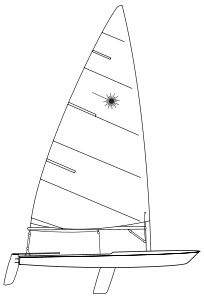


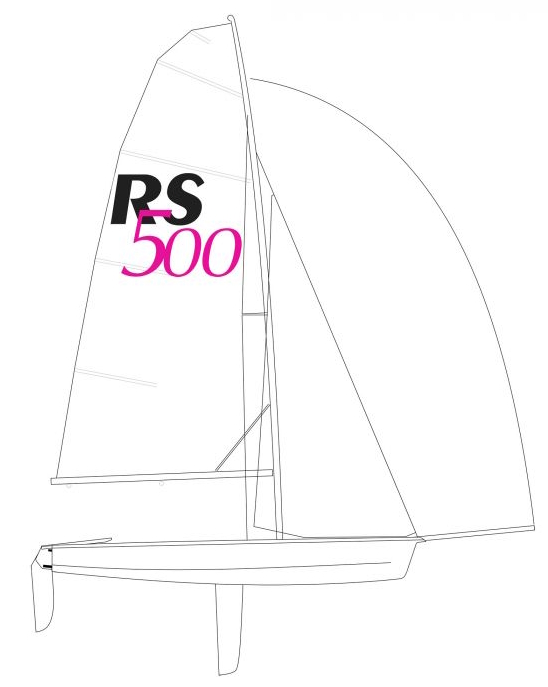


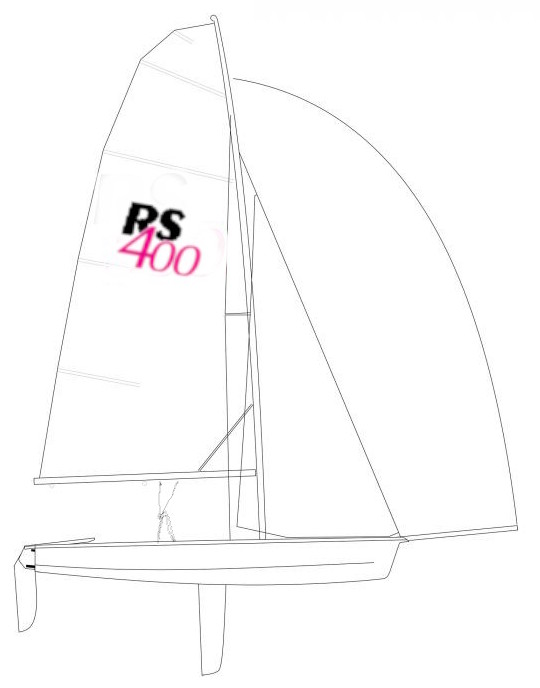

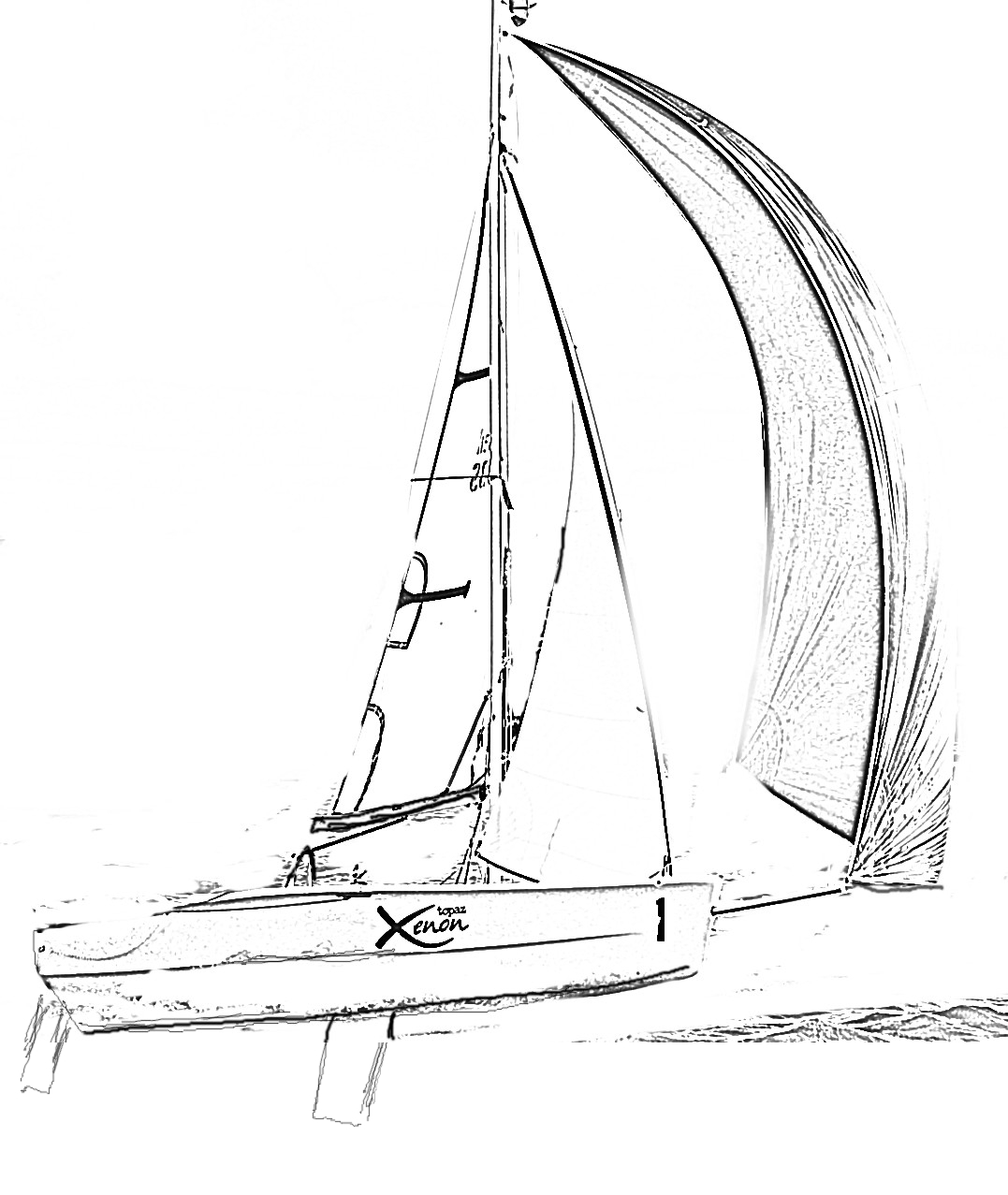
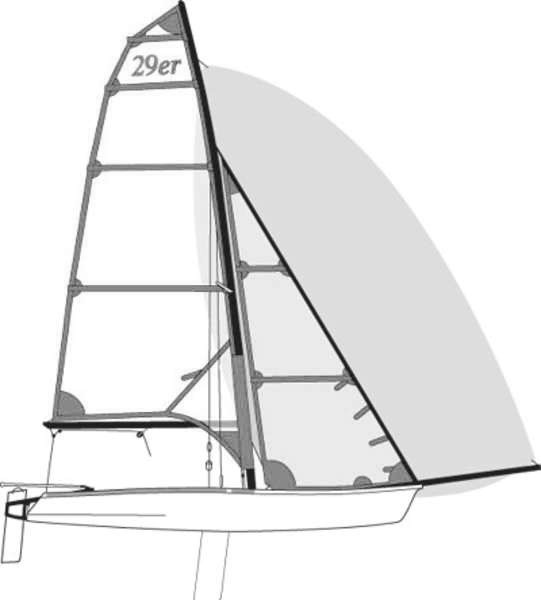
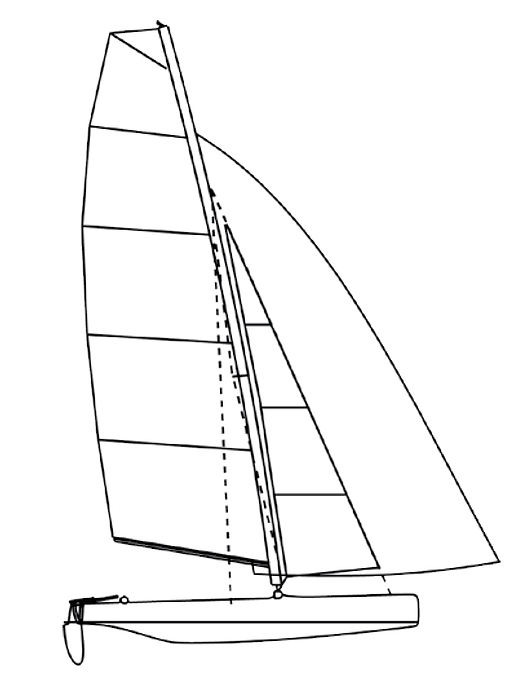
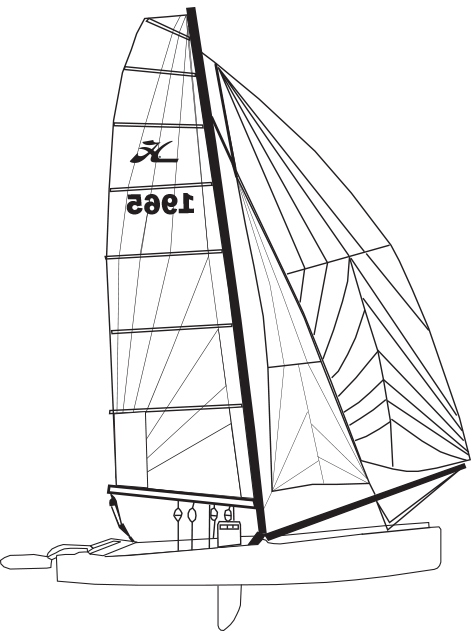

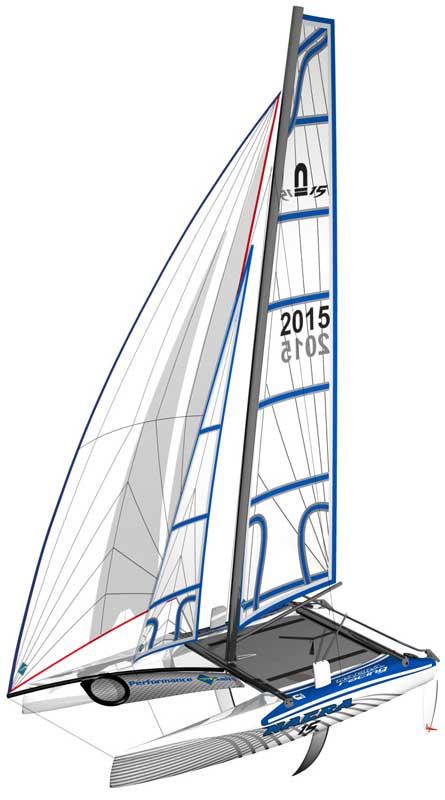
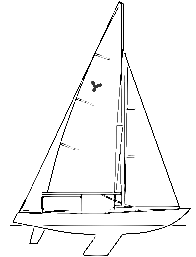



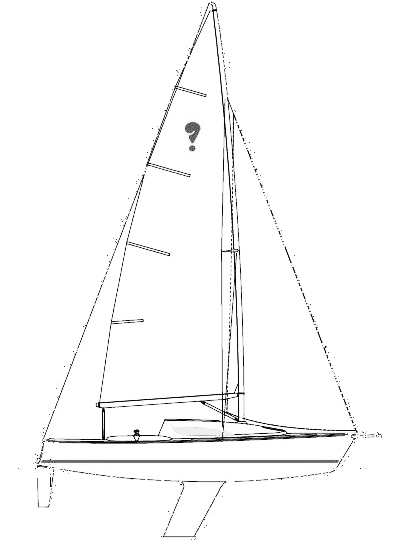

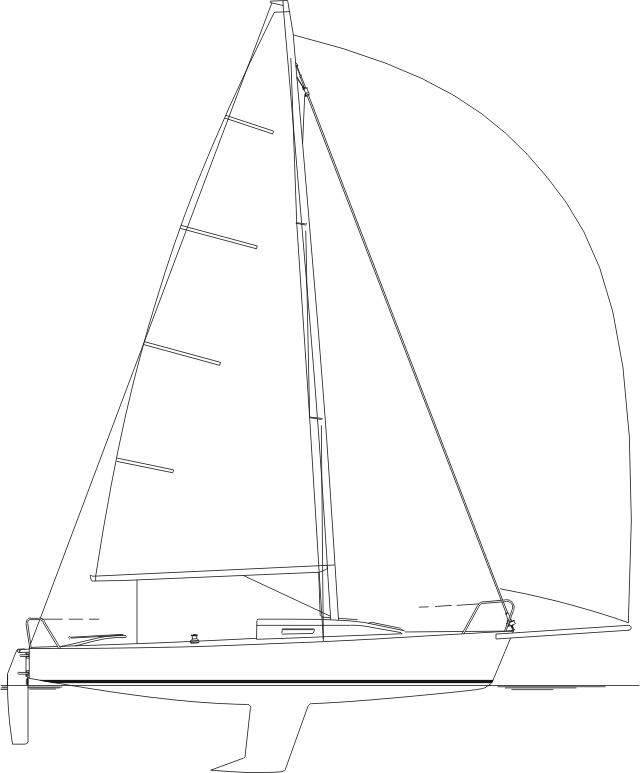
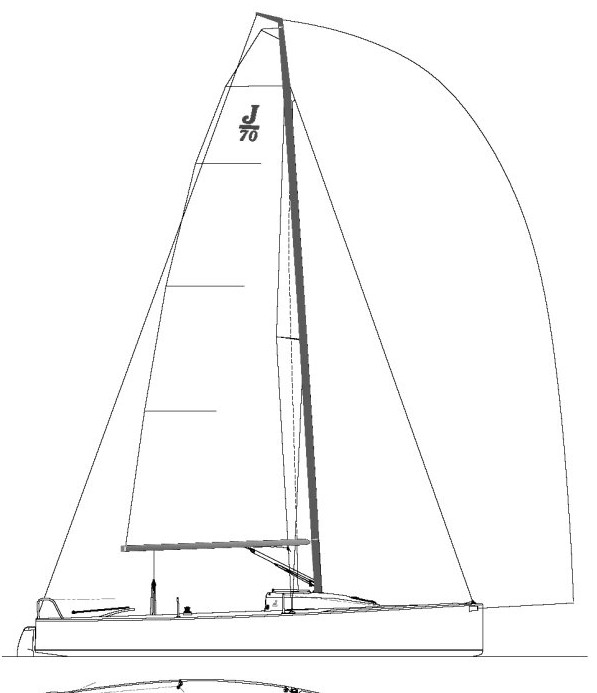
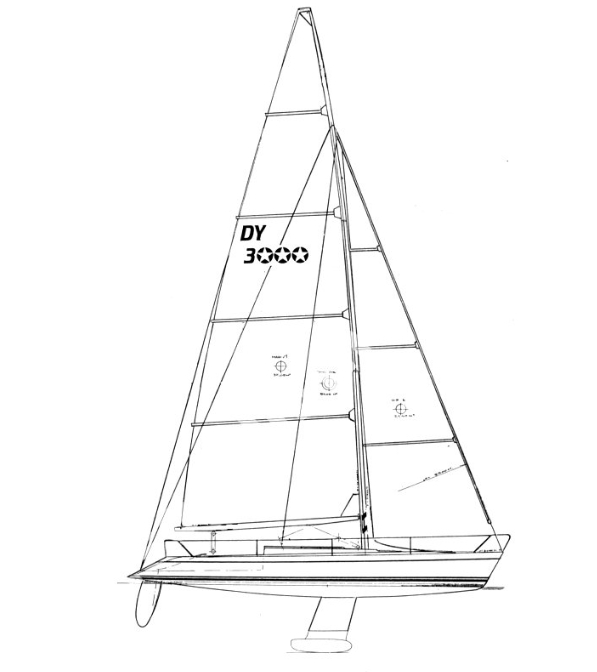
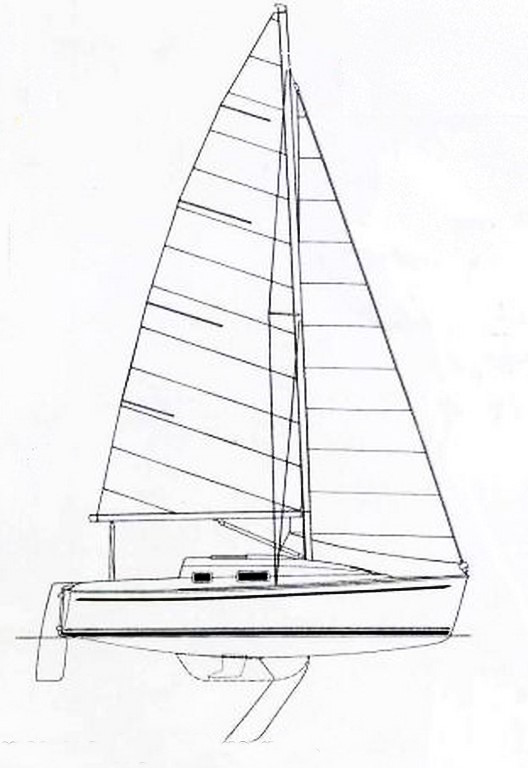

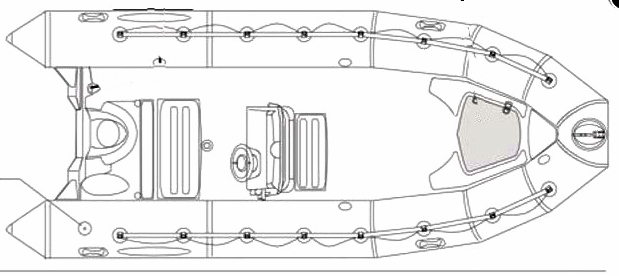
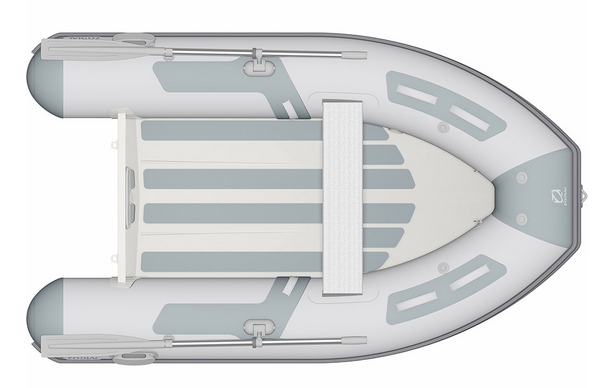
YCC mooring places and estimated bathymetric plan produced in May 2023 by Alberto and Marine and updated by Nathalie and Tim to add the concrete blocs (yellow rectangles):
View from the sky of the YCC boat's mooring places and of Port-Choiseul situation:
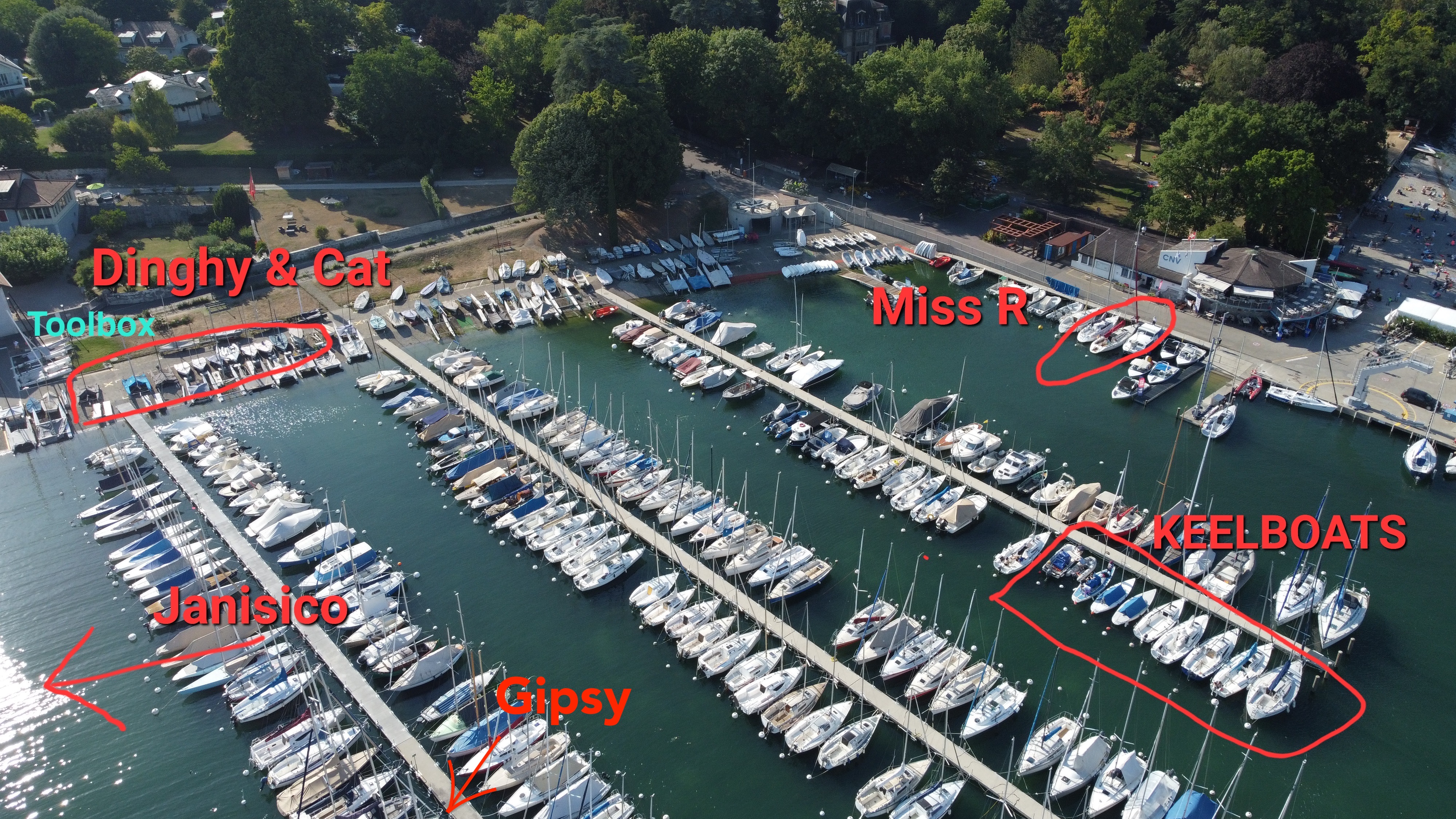
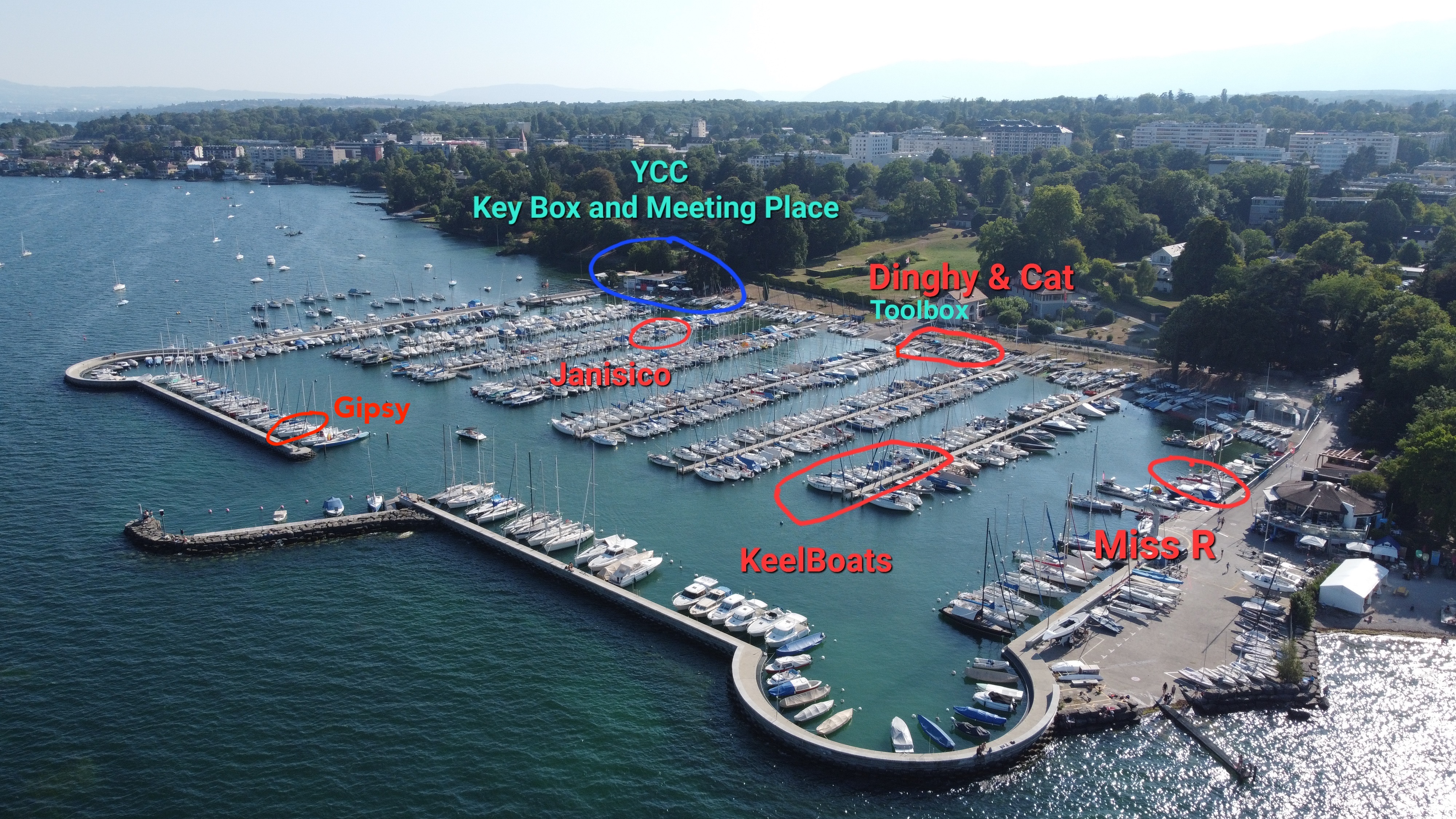
Pictures by Federico 2022©
You need this certificate to demonstrate that the boat is properly insured when participating to regattas.
Insurance 2023 Keelboats and Nacra in PDF
Insurance 2023 Dinghies, Cats and Ynglings in PDF
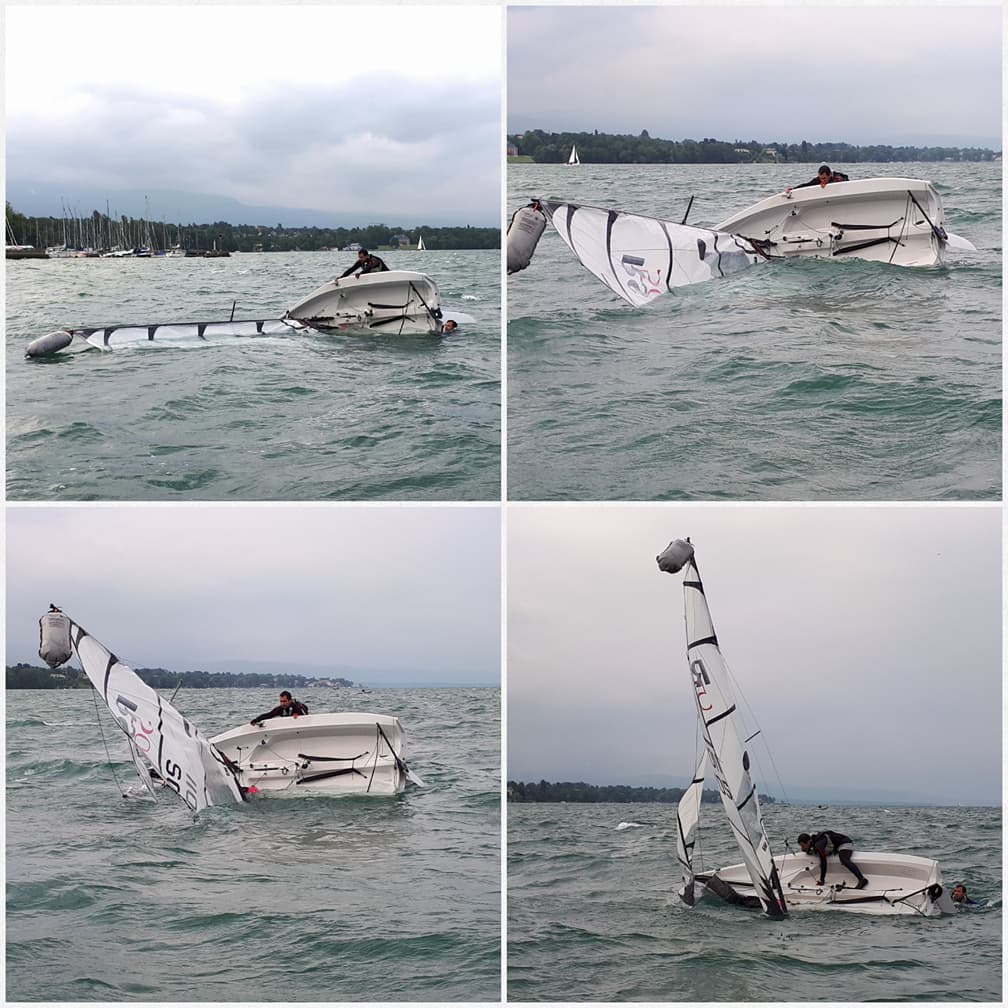
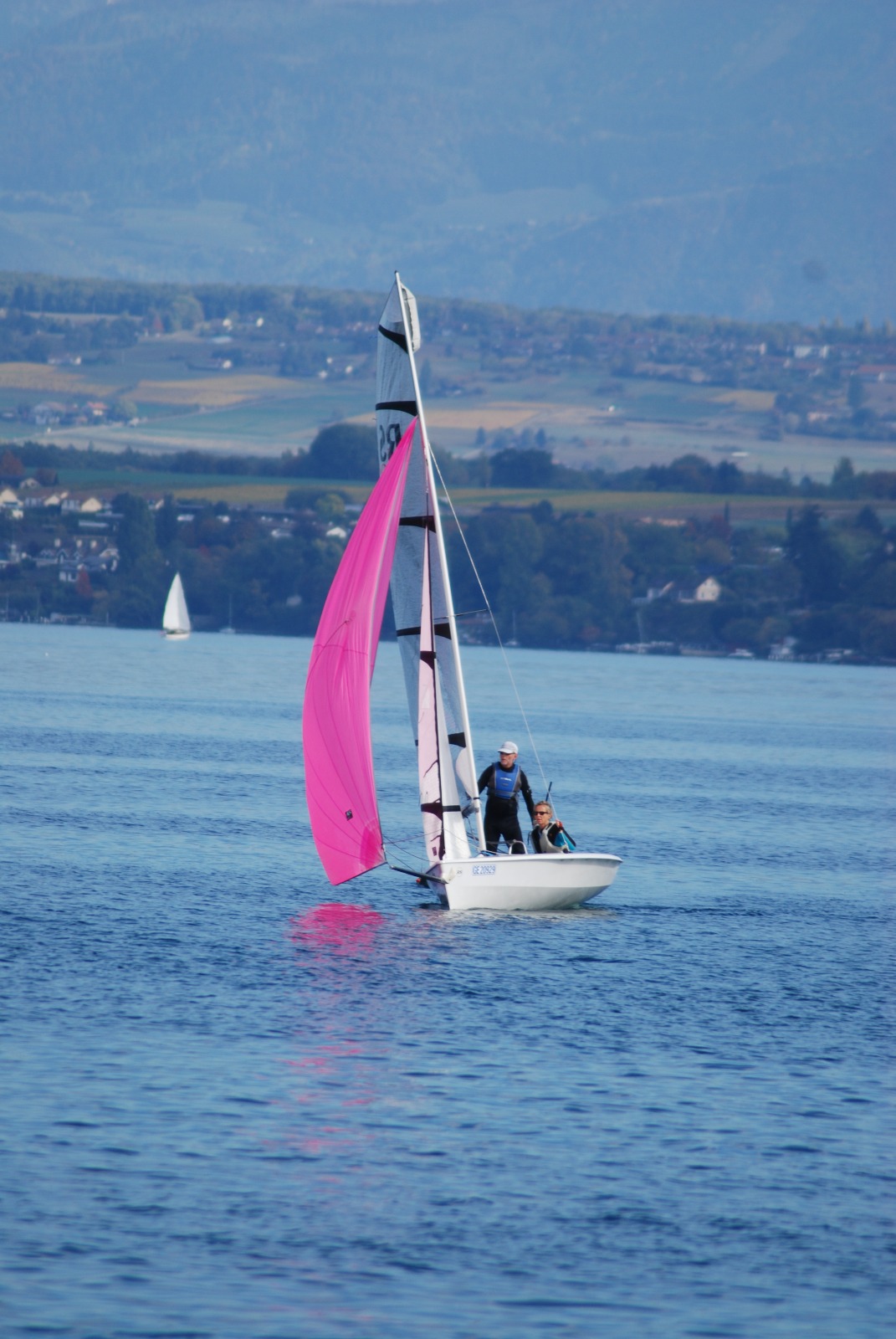
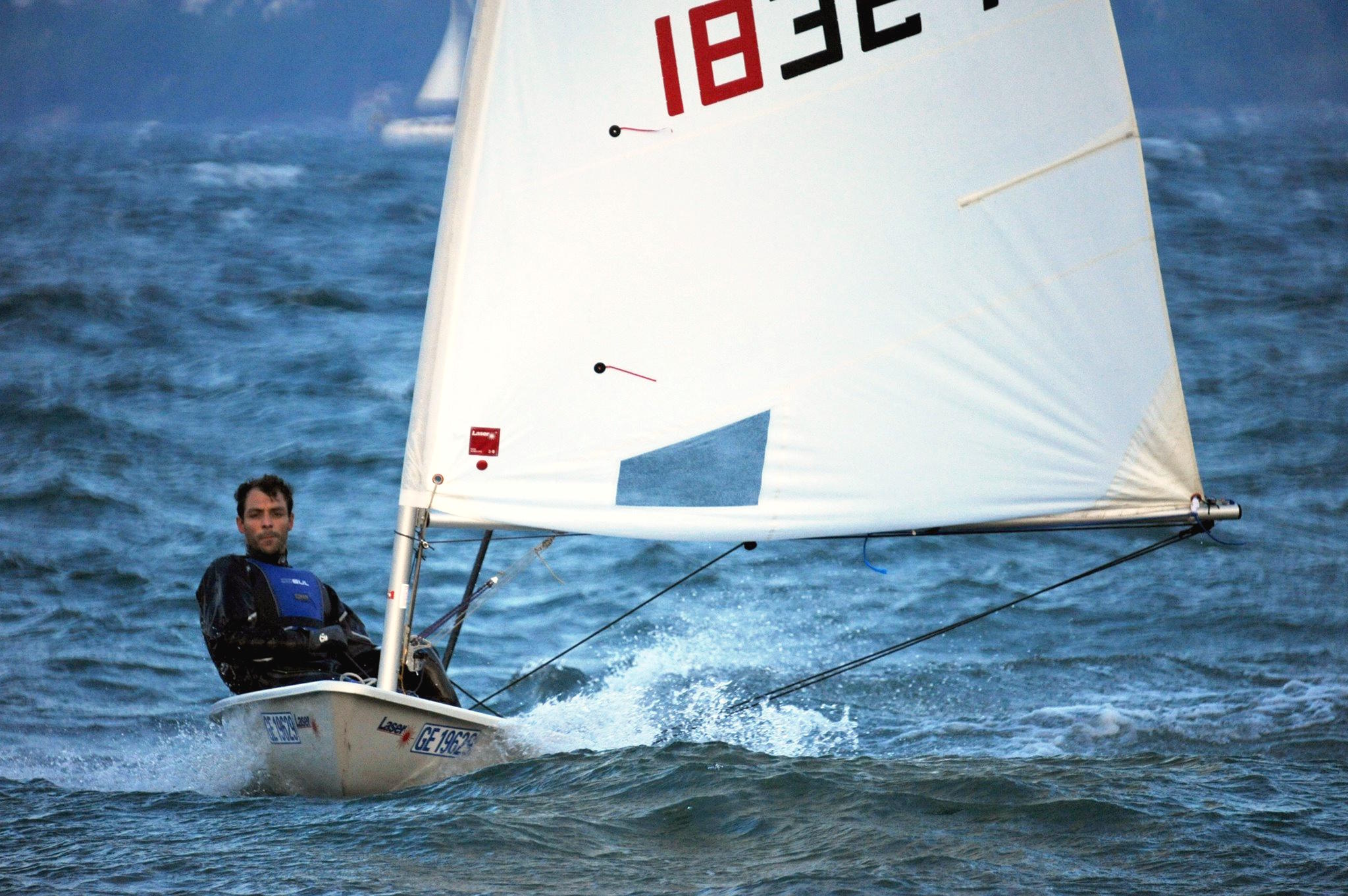 Keys: D for all, except the 29er that requires ED key.
Keys: D for all, except the 29er that requires ED key.
We have a fleet of Modern and high performance dinghy. Dinghy are small and light sailing boats, designed for sport, fun and sail - learning. Dinghy have a retractable centerboard that allows an easy mooring on a trailer, and have NOT a weighted keel, that means their stability is granted by the weight of the crew on board, that has to move according to the wind to keep the balance. Dinghy are today very safe boat, the capsize and recovery is a pure fun event, that you will for sure enjoy. On dinghy, crew is in direct contact with the water, therefore a proper wet-suit is needed. There is better sailing boat to learn how to sail. Laser is one of the most successful sailing boat ever designed, is it the only boat in the club where you can sail alone. All our dinghy are category C boats, they are designed for max 6bft and 2 meter waves. In sustained wind (3bft-4bft), dinghy special hull design allows them to overpass the hull-speed and make them SURF on the waves generated by the hull. Surfing a dinghy is one of the most satisfactory and fun and sport-demanding experience you can have on the water. All the dinghy have a modern rig, self draining hull, full batten mainsail, auto-gennaker pole extracting circuit (of course, not the laser that has only the main sail).
| Model | Name | Cap | Registration | Length [m] | Beam [m] | year | Sail Area [m2] | Sail No | FFV Rating | YCC Rating (Yardstick) |
|---|---|---|---|---|---|---|---|---|---|---|
   RS500 |
Rising Star | C2 | GE-18686 | 4.34 | 1.58 | 2008 | 13.1 | Mylar=960 Dacron=980 |
Mylar=973 Dacron=985 |
|
| Rocket Science | GE-19217 | 2009 | 721 | |||||||
| la Niña | GE-20984 | 2016 | ||||||||
  RS400 usage documentation |
Rolling Stone | C3 | GE-18041 | 4.52 | 2.00 | 2004 | 14.76 | 930 | 943 | |
| Santa Maria | GE-20929 | 2016 | SUI 855 | |||||||
   Laser |
Castor | C3 | GE-19628 | 4.23 | 1.37 | 2011 | 7 | SUI 201074 | Standard=1100 Radial=1130 |
Standard=1095 Radial=1136 |
| Pollux | GE-19629 | 2011 | SUI 201075 | |||||||
| Photon | GE-19949 | 2005 | SUI 183278 | |||||||
 Topper Xenon |
HiggX | C4 | GE-18545 | 4.50 | 2.00 | 2007 | 12.00 | SUI 71 | 1080 | 1079 |
 29er |
Neutrino | C2 | GE-20891 | 4.45 | 1.70 | 2016 | 13.19 | 890 | 919 |
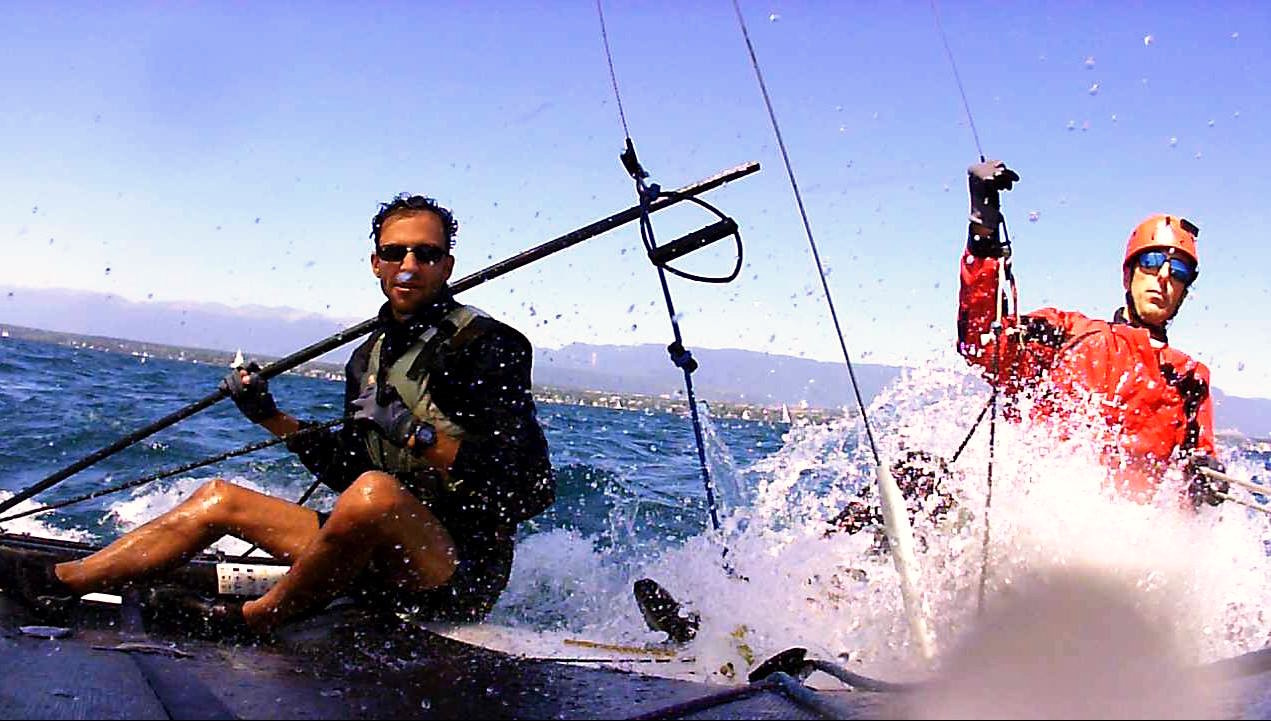
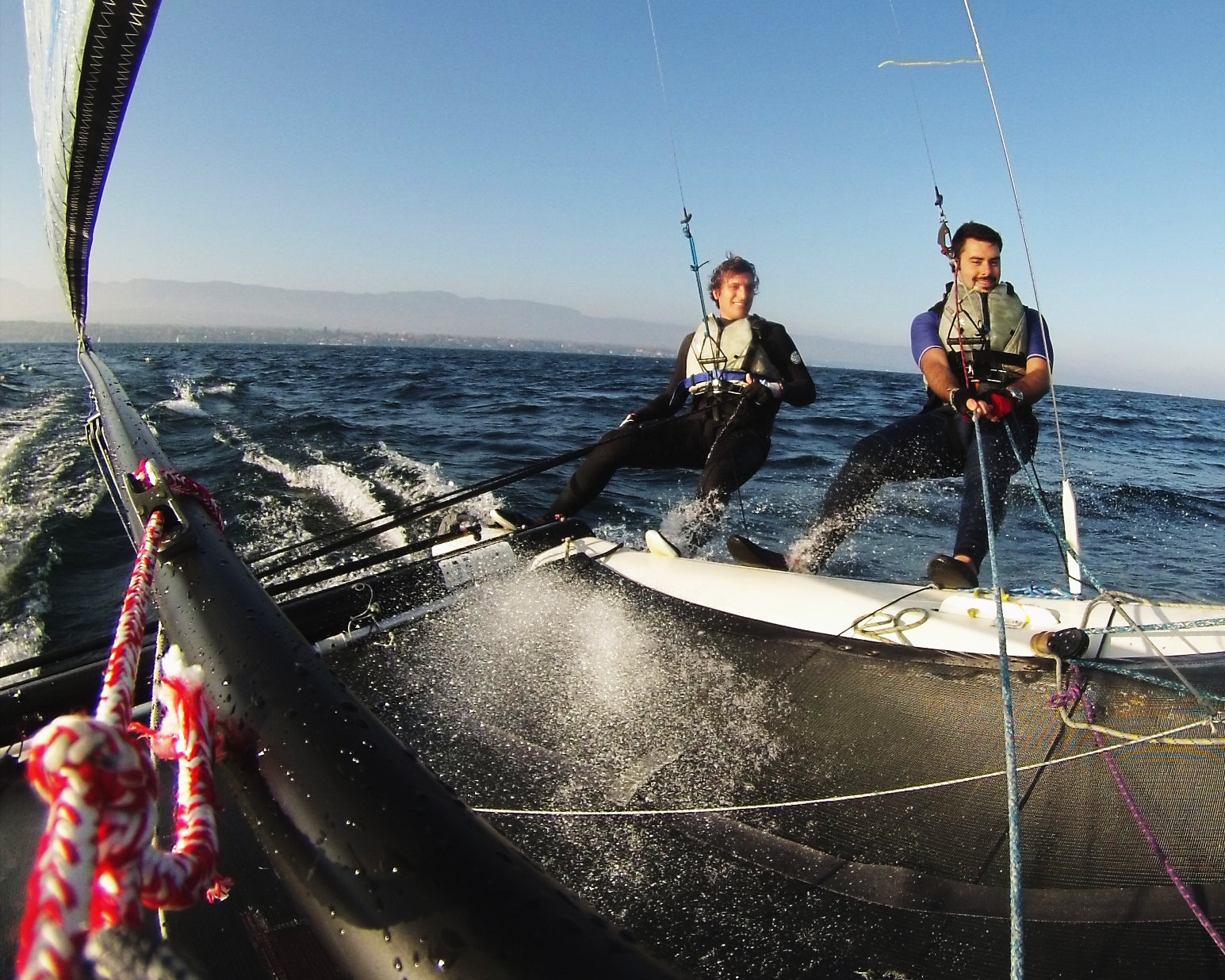
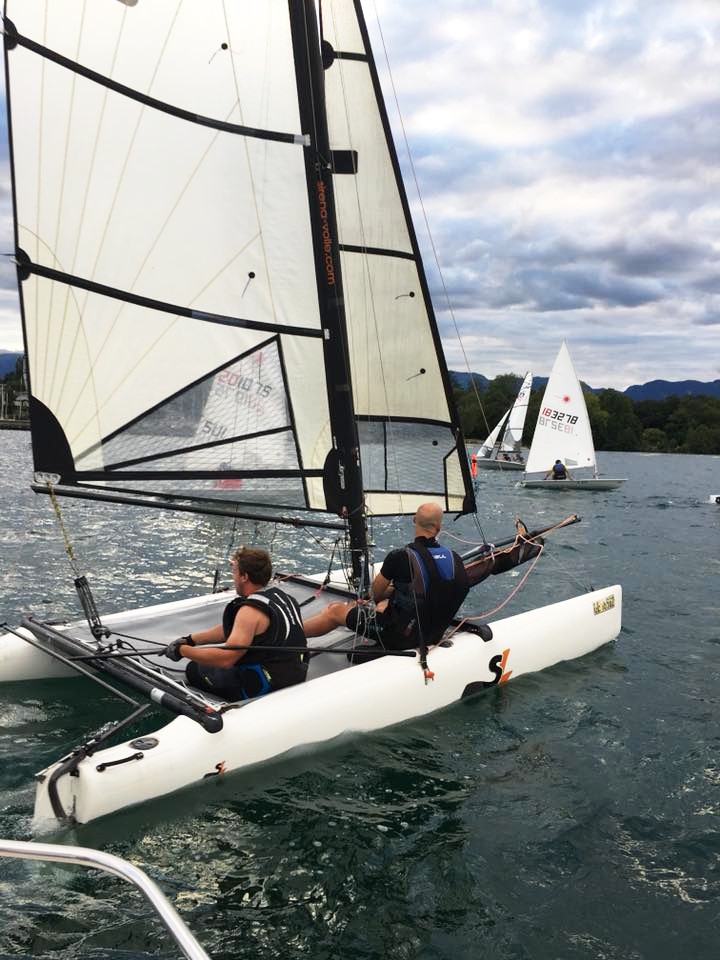 Keys: C for SL16, EC for Tornado and Hobie Tiger
Keys: C for SL16, EC for Tornado and Hobie Tiger
We have 3 Modern Catamarans. All of them are designed for sport and high performance sailing. The double hull design, gives to the boat a stability by shape, so there is no need of a weighted keel, plus the elongated hull shapes grants a very good hydrodynamic performance. Catamarans are very powerful machines, and their big sail area and the very fast speed requires a very good and fast sailing skills. Similar to the dinghy, sport catamarans also need the weight of the crew and the usage of the trapeze to keep balance. We consider catamarans advanced, but the SL16 can be a good boat to start sailing, or, in light wind condition, a good recreational boat. Some of the advantages of the catamarans are the speed, the low draft, the space on board. Main Disadvantages are the lower maneuverability in the port, and the complicated maneuver of capsize recovery. Catamaran performs best between 2 and 4 Beaufort maximum. Foiling Catamaran Nacra 15 In 2019, we will get a Nacra 15 with interchangeable C and L shaped centerboard, allowing the club to experience the joy of a foil-flying catamaran!
| Model | Name | Cap | Registration | Length [m] | Beam [m] | year | Sail Area [m2] | Sail No | FFV Rating | YCC Rating (Yardstick) |
|---|---|---|---|---|---|---|---|---|---|---|
 SL16 Sirena |
Catapult | C3 | GE-18662 | 4.80 | 2.35 | 2008 | 12.00 | 860 | 760 | 890 |
 Hobie Tiger |
Meerkat | C3 | GE-18865 | 5.51 | 2.60 | 2007 | 13 | NED 2302 | 666 | 693 |
 Tornado |
Tornado | 3 | GE-51118 | 6.05 | 3.05 | 1990 | 15 | SUI 153 | 697 (classic) 635 (Big rig - Spi) 655 (24m2 Spi) |
644 |
 Nacra 15 |
Quantum Cat | C2 | GE21881 | 4.70 | 2.40 | 2019 | 13 | SUI 266 | 736 721 (FCS Foiling) |
734 |
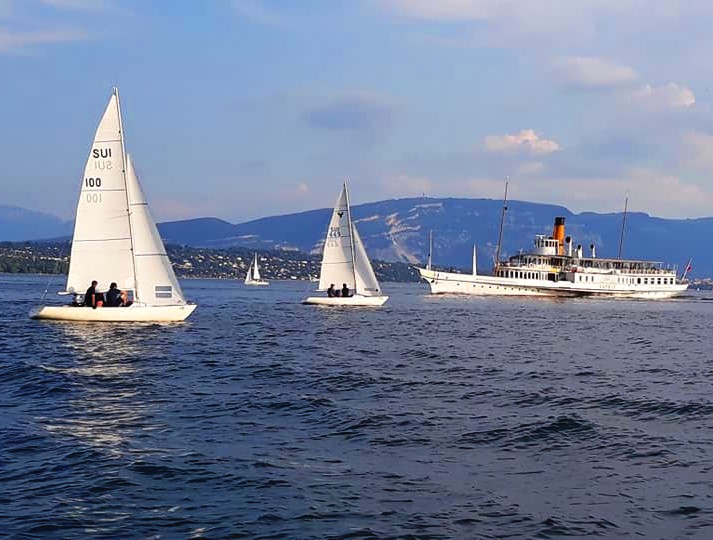
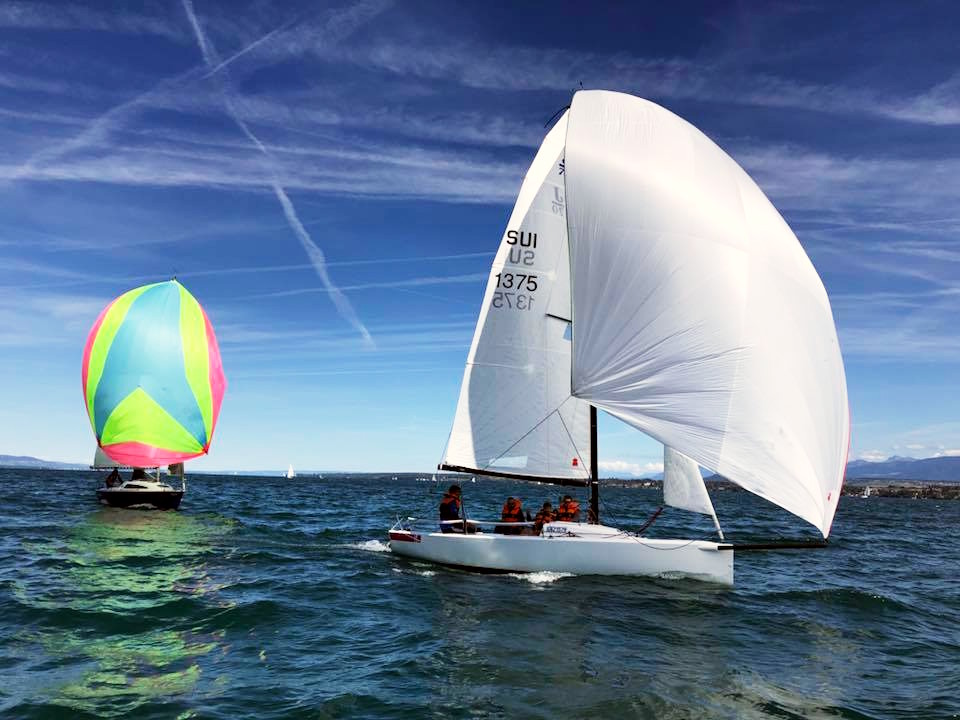 Key required: Yngling Y - SU for Surprise, J70, J80, GS for GibSea
Key required: Yngling Y - SU for Surprise, J70, J80, GS for GibSea
We have a large number of modern keel-boats, some of them very small and open deck like the Yngling, and are the most user boat in the club, because
they are easy to handle and can be very recreational or are perfect for learning. Surprises, are multi-purpose classical boat design,
and are most used sailing boat in the Leman lake.
J80 and J70 , are modern keel-boat designed mainly for performance sport and racing. They have like our dinghy a Gennaker instead of a Spinnaker, and
they have a surfing hull profile. The space of the cabin
is minimal, and most of the deck is available for a crew that need to fast maneuver.
TheGibsea is a classical cabin boat designed for the sea, for general purpose
comfort sailing and cruising.
Yngling and Surprise and J70 are boat of class C, (max 6bft 2meter waves)
Gibsea and J80 are class B boat (max 8bft, 4meter waves).
| Model | Name | Cap | Registration | Length [m] | Beam [m] | Draft [m] | year built | Engine [HP] | Sail Area [m2] | Sail No | No SRS (ACVL) | Rating (Coef.) SRS (ACVL) | FFV Rating | YCC Rating (Yardstick) |
|---|---|---|---|---|---|---|---|---|---|---|---|---|---|---|
    Yngling usage documentation |
Vas Y | 4 | GE-1603 | 6.35 | 1.73 | 1.05 | 1974 | - | 15.00 | SUI 452 | 1790 | 0.877 SRS/ACVL cert (2018) | 1020 | 1057 |
| J'Y Vais | 3 | GE-17830 | 6.34 | 1.71 | 1.05 | 2002 | - | 14.00 | SUI 100 | 1791 | 0.877 SRS/ACVL cert (2018) | |||
| Y-me ? | C3 | GE-17866 | 6.34 | 1.71 | 1.05 | 2003 | - | 14.00 | SUI 449 | 1792 | 0.877 SRS/ACVL cert (2018) | |||
| Janisico [1] | 4 | GE-4787 | 6.35 | 1.73 | 1.05 | 1973 | - | 15.00 | Z 57 | 0.877 | ||||
  Surprise usage documentation |
Mic Mac | C6 | GE-14297 | 7.65 | 2.48 | 1.60 | 1982 | 4 | 25.00 | SUI 230 | 395 | 1.000 SRS/ACVL cert
Jauge cert |
925 | 970 |
| Mamma Mia | C6 D10 | GE-19209 | 7.65 | 2.48 | 1.60 | 2009 | 4 | 25.00 | SUI 702 | 982 | 1.000 SRS/ACVL cert
Jauge cert |
|||
 J80 usage documentation |
Jedi | 8 | GE-20406 | 8.00 | 2.49 | 1.50 | 2014 | 4 | 34.50 (Jib) |
SUI 1523 | 1788 | 1.003 (Jib only, please!) SRS/ACVL cert |
899 | 922? |
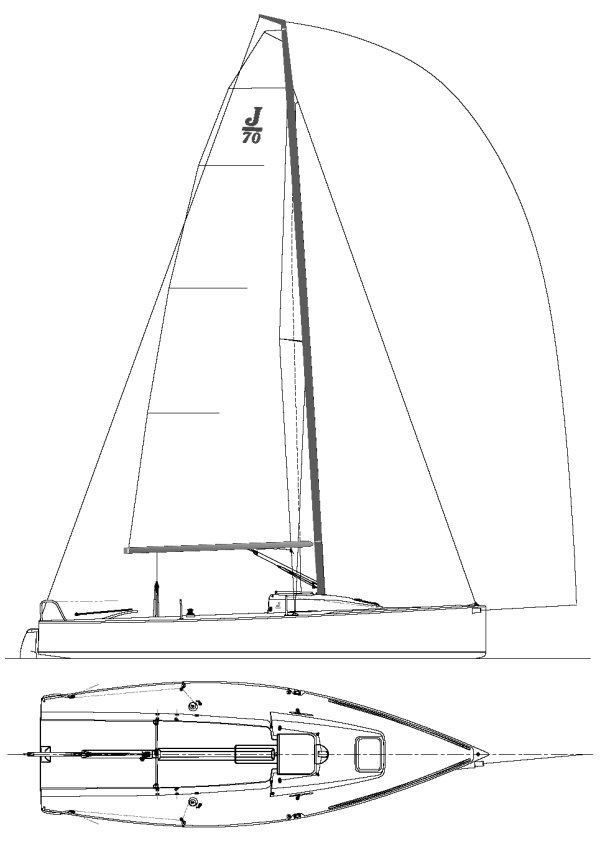 J70 usage documentation |
Padawan | C6 | GE-21579 | 6.93 | 2.25 | 1.45 | 2018 | 2.3 | 26.40 (Jib) |
SUI 1375 |
2314 | 0.987 SRS/ACVL cert
Measurement cert |
906 | TBD |
 Dynamic 3000 usage documentation |
MissR | 8 | GE-22276 | 10.40 | 2.50 | 1.65 | 1990 | 9 | 53.00 | SUI 543 | 823 | TBD | ||
 Gib Sea 264 |
Gipsy [1] | 6 | GE-52923 | 7.80 | 2.92 | 2.00 (0.80 lifted) | 1996 | 12 | 30.00 | 1002 | 1057 |
[1] Boat held in co-ownership.
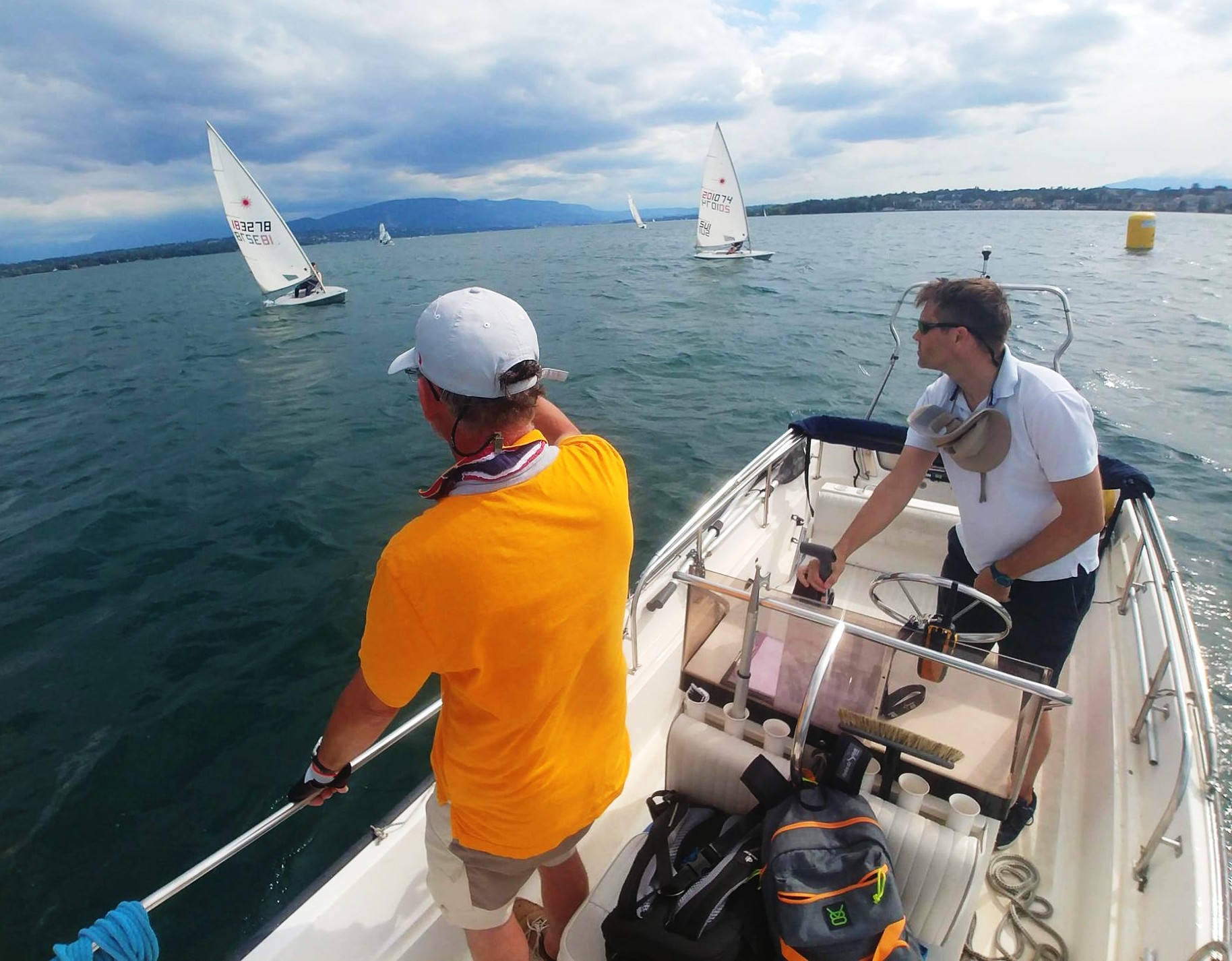
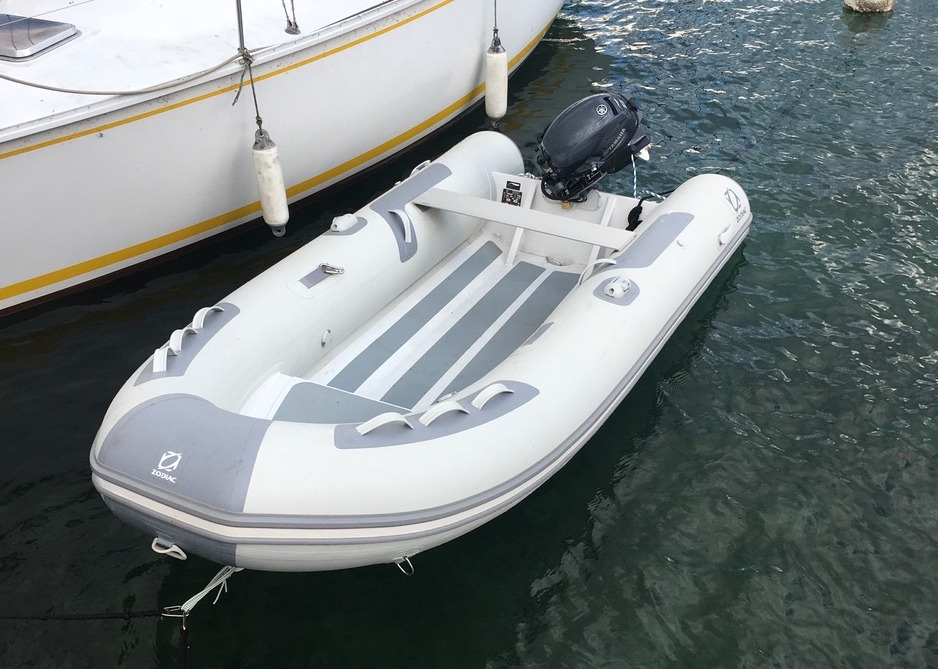 Keys required:
Keys required:
Motor boats are NOT for private outings, are only used for safety and instructor teaching during the courses. Our Q-Boats have a 80HP, repectively a 50HP, engines, so a motorboat license is mandatory.
The inflatable RIB has an engine of 8HP, so license is required if you are French resident only, and it is Class C.
| Model | Name | Cap | Registration | Length [m] | Beam [m] | year built | Engine [HP] |
|---|---|---|---|---|---|---|---|
 Boston Whaler Montauk 17 |
ResQ (a.k.a the Q-boat) | C7 | GE-19285 | 5.00 | 1.91 | 1995 | 80HP |
 Bombard Explorer 550 NEO NR usage documentation |
Mother Duck II | C14 | GE-23137 | 5.50 | 2.18 | 2023 | HONDA BF50DK4 50HP |
 Zodiac Cadet360 Alu usage documentation |
Baby Duck (a.k.a. the Rib) | C6 | GE21825 | 3.63 | 1.67 | 2019 | 8 - 5.9KW |
We own a large collection of sails, for daily use and for regatta. See Keelboat Sail Inventory link in YCC shared documents.
To transfer boats between winter storage space or to the Chantier Naval, we have some boat trailer: Boat, motor and trailer inventory link in YCC shared documents.
We have a lot of large and floatable regatta bouys List to come
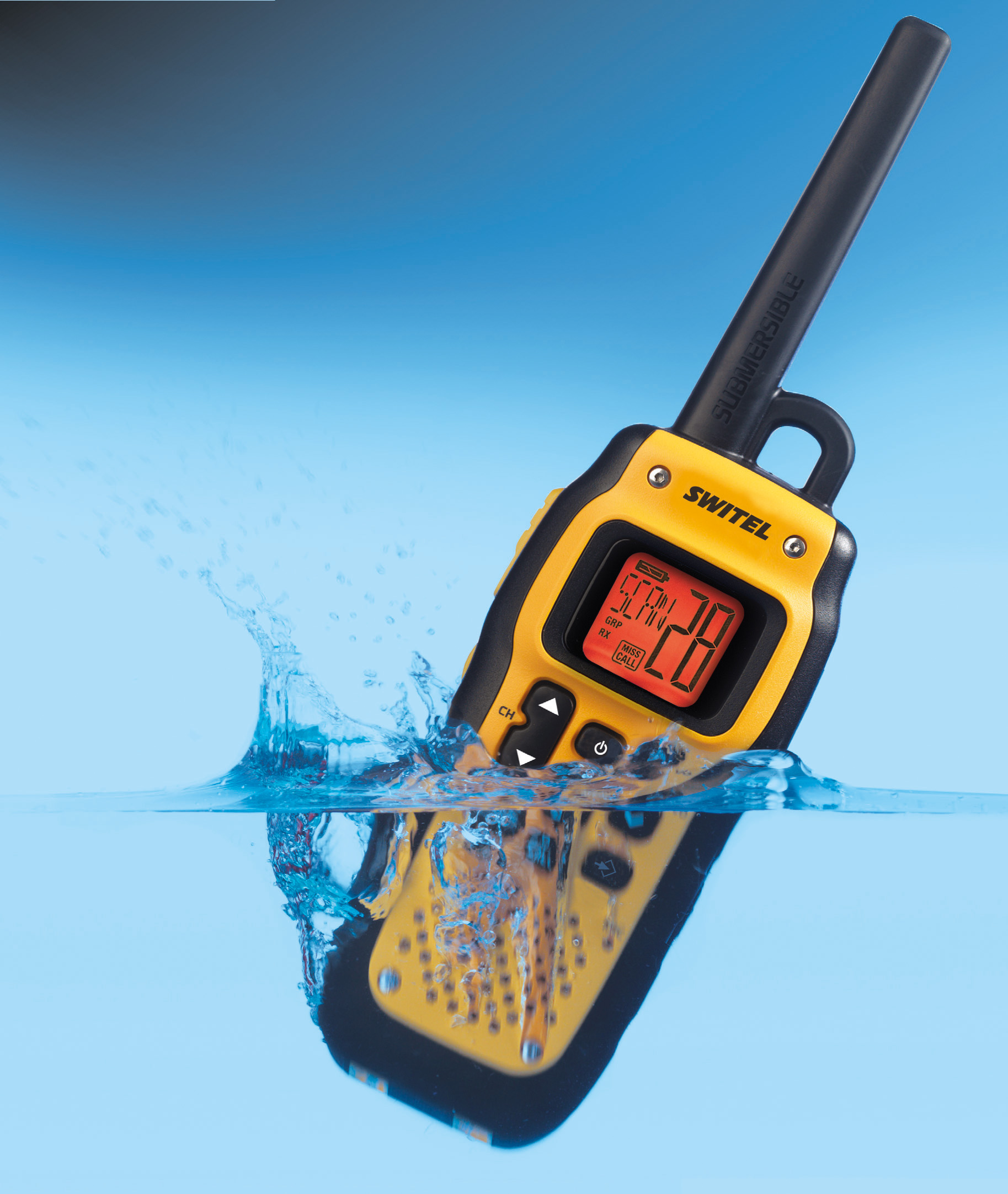
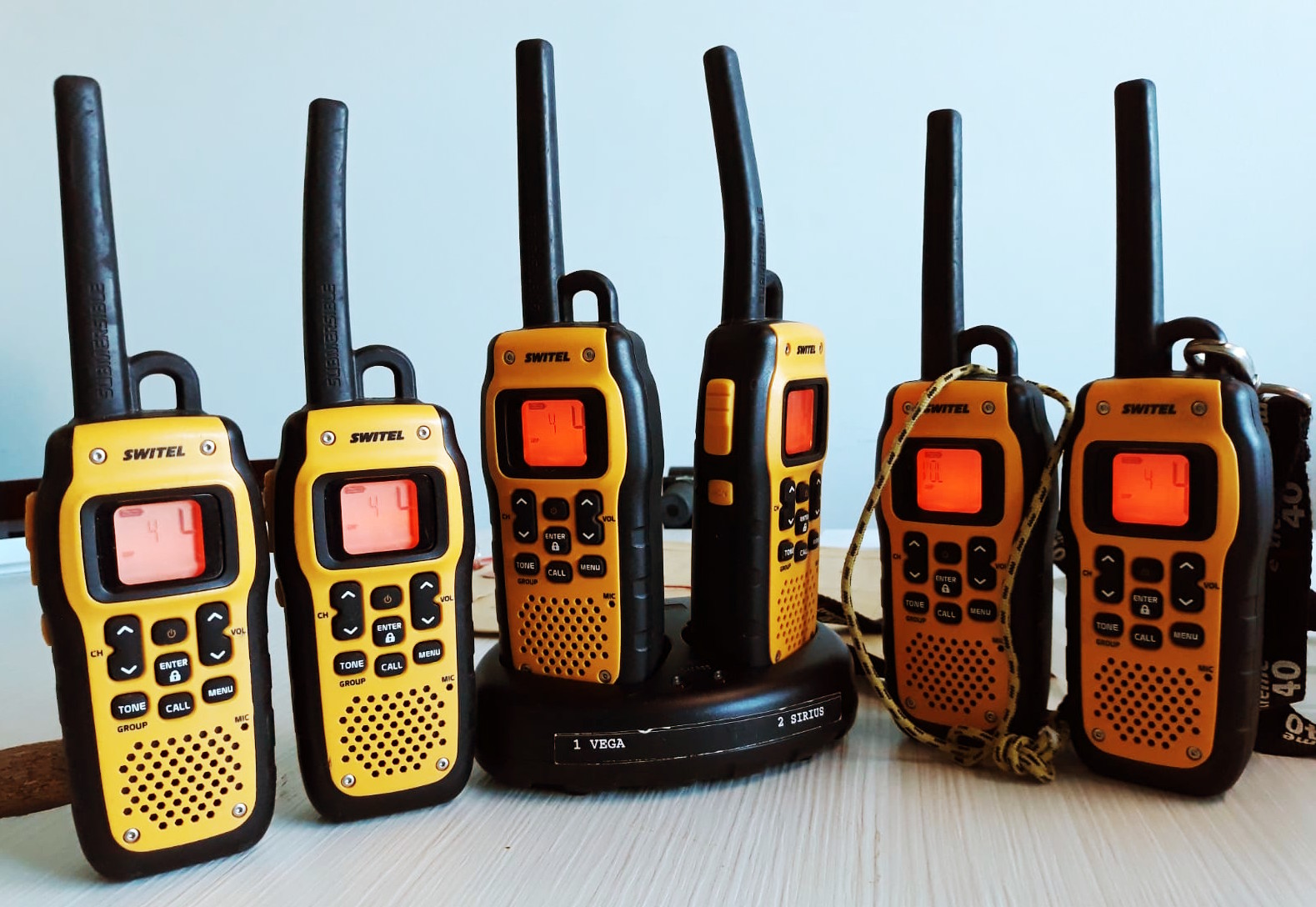
To ensure safe communication during courses, regattas and also to private outings, Luigi Gallerani proposed in to buy 6 floating waterproof radios license free, and let them available during the sailing season in Versoix at the reservation computer kiosk. What we currently own:
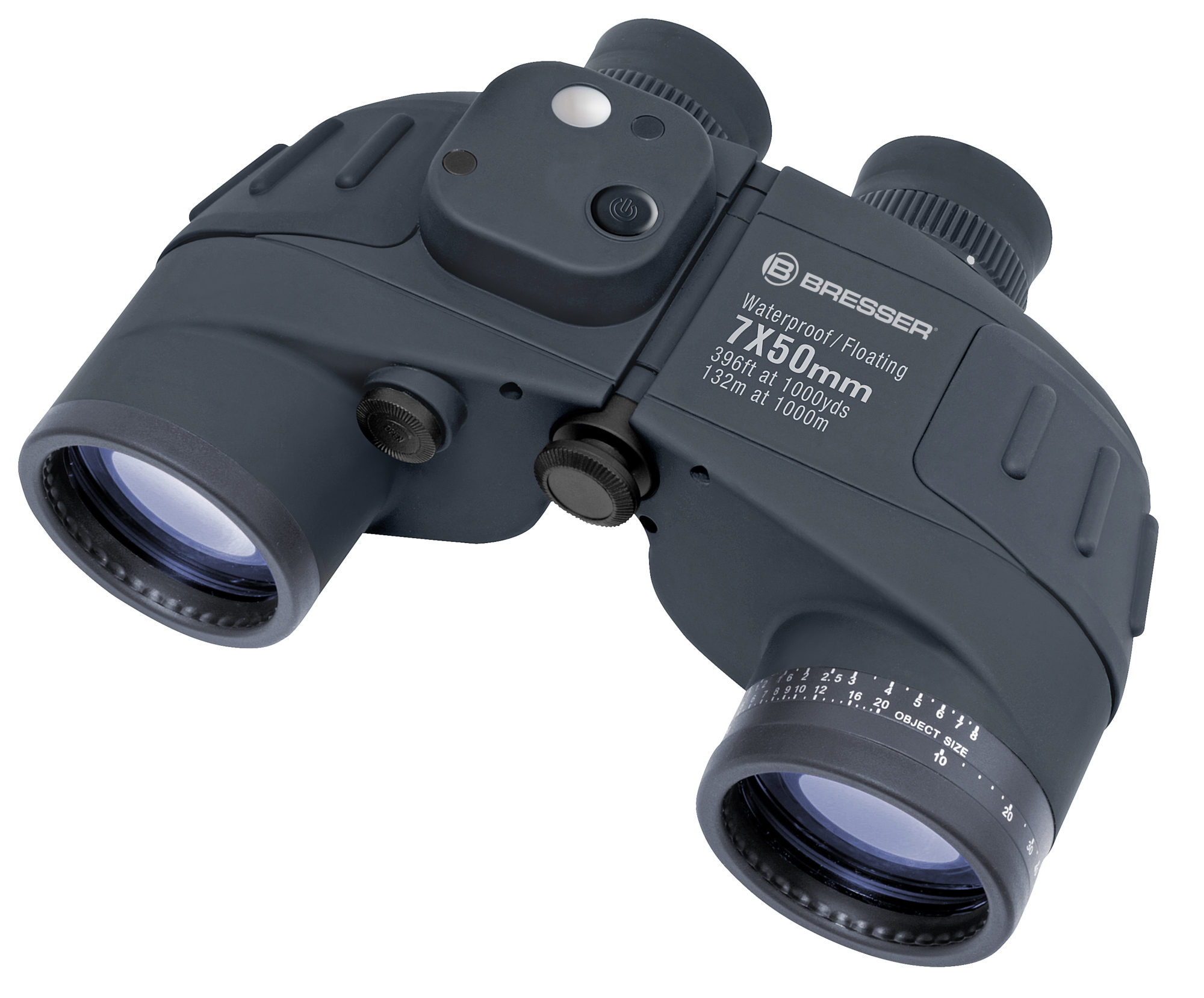

Since 2019 we have 2 binoculars, one BRESSER 7x50 marine floating waterproof for navigation to be kept on board of SU or J80
and one OLYMPUS 10x50 for observation from the ground, to be kept in the computer box.
Marine binocular traditionally have no more than 7x magnification, as the oscillations of the boat makes impractical a higher one without stabilization, are fully
waterproof and can float, and have an integrated compass to make azimuth, and a graduated reference system to make approximate distance measurements.
Terrestrial binocular, instead, can have higher magnification. However, magnification is not the only important parameter, luminosity and field of view really matter. High luminosity
is granted by a large aperture of the frontal lens, using of multi-coated lenses and prisms to reduce internal reflection, and a large aperture of the exit pupil of the eyepiece, (matching the maximum pupil of human eye around 5mm). Field of view
is granted by an high quality optical design with low aberrations and distortion, such that image in the corner is sharp and fully usable. (cheap binoculars have a very narrow field of view).
Both binocular at YCC have a Porro Prism design with multi-coated lenses and eyepieces, a large aperture (50mm) to ensure good view even during night and low light conditions.
BRESSER Nautical 7x50 WD Compass Binoculars The BRESSER Nautical 7x50 has a water resistant and robust rubber armour as well as a gas purged optical tubes. They therefore are the ideal binocular for maritime use on board. The gas purged filling of the Nautical binoculars prevents water and moisture from entering the binocular by creating an interior pressure capsule. The fully coated optics allow a bright and sharp image to be replicated even when the weather conditions have turned bad.
Waterproof and fog-proof housing with nitrogen gas filling. Robust, rubber armoured binocular body. Illuminated compass and Reticle.
Individual eyepiece focusing.
OLYMPUS 10x50 DPS I Type Porro prism series, Eye interval adjustment range 60 - 70mm, Lens configuration 5 elements / 3 groups, Magnification 10x, Objective lens diameter 50mm,
Exit pupil diameter 5mm, Actual field of view 6.5°, Apparent field of view 65°, Field of view at 100m 11.4m, Relative brightness 25, Eye relief 12mm
Closest focal point 6m, Dimensions 191 x 178 x 63mm (fully extended) Weight 855g
Note: Binoculars are very dedicated objects, they only works if they are perfectly calibrated and aligned, so threat them with a lot of respect and care, and remember, they absolutely
do not tolerate mechanical shocks.
| Model | Name | Cap | Old Registration | Length [m] | Beam [m] | Draft [m] | years | Engine | Sail Area [m2] | Sail No | No SRS (ACVL) | Rating (Coef.) SRS (ACVL) | FFV Rating | YCC Rating (Yardstick) |
|---|---|---|---|---|---|---|---|---|---|---|---|---|---|---|
| Laser 2 | Beauty | 2 | GE-16296 | 4.41 | 1.42 | ?-2015 | 11.5 | 1060 | 1035 | |||||
| Laser 2 | Charm | 2 | GE-16297 | 4.41 | 1.42 | ?-2015 | 11.5 | |||||||
| Jeanneau Aquila | Brabant | 8 | GE-10212 | 8.25 | 2.90 | 1.3 | 1978-2018 | 7.9 | 27.00 | 1021 | 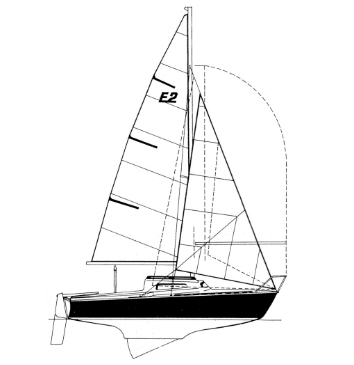 Edel II |
Edel | 4 | GE-2452 | 5.57 | 2.10 | 1973-2019 | 14.00 | 1206 |
| Yamaha 340S | Yam | 4 | GE 19315 | 3.36 | 1.74 | 2010-2018 | 8 | |||||||
| Bic 245 | Bic245 Sportyak | 3 | Not Required | 2.45 | 1.20 | 2016-2018 | max 3 |
Last modified: April 2024 by FM